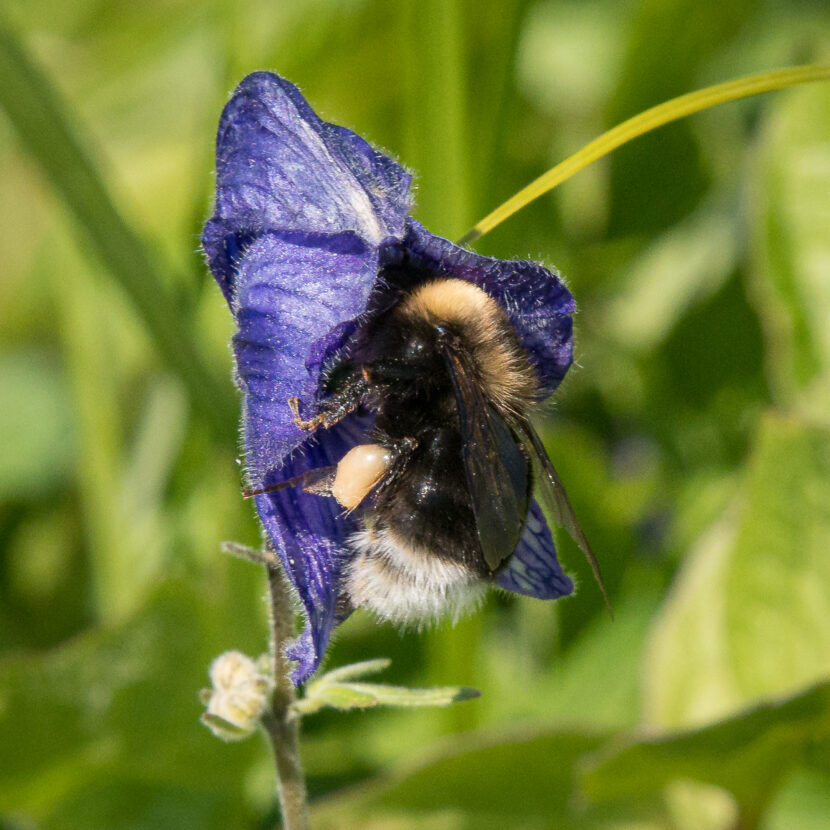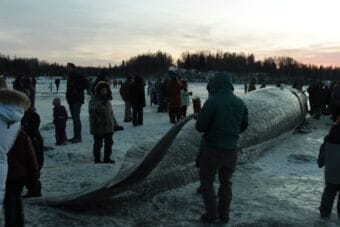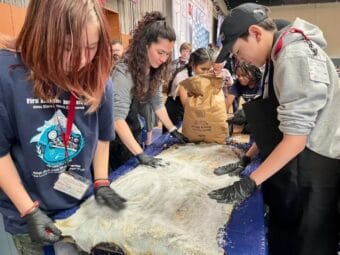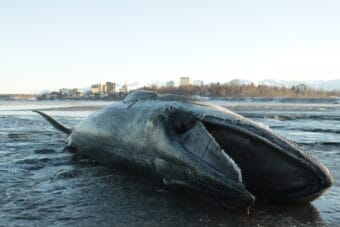
A special denizen of the upper Lynn Canal might be hiding in plain sight, undocumented by science. Derek Sikes, a professor of entomology in Fairbanks, wants to know if the western bumblebees are in Haines.
Sikes is looking for a bee with one feature. The western bumblebee has that fuzzy bumblebee look. It has some yellow on its thorax, but its abdomen is all black, except for a splash of white at its very end.
“It has this very distinctive white butt,” he said.
Western bumblebees were once common throughout Western North America. As global warming progresses, Sikes says the bees are disappearing from the southern part of their range. But so far, biologists are not seeing them move north to follow their preferred temperatures. This means their range is shrinking.
Sikes says if current trends continue, they could go extinct by the end of the century. The US Fish and Wildlife Service is considering listing the species as endangered.
To determine if these bees occur in Alaska, biologists are modeling their current habitat.
“Looking at all the parameters like temperature, precipitation, and a whole lot of other things. And then seeing, ok, this is where it occurs, where might it also occur?” he said. “What other parts of the world have the same niche, the same basic habitat?”
This is what has led Sikes to Skagway and Haines. He says currently the western bumblebee population peters out in British Columbia, at the latitude of Southern Southeast. Much of the panhandle is too wet for the species. Hoping to find them, Sikes went to Haines last summer, and a colleague went to Skagway. They headed for the flower patches to collect some specimens.
“The basic method is we go around, we look for flowers, we net them, we move on to another site, and we try to cover as much of the road system as possible in the short time that we are there,” he said.
To assist in the search, the biologists have enrolled some local volunteers. Haines resident Patty Kermoian is one of them.
“He came down to Haines, and I met with him briefly, and he set me up with a bee net and some collecting vials and told me what to do, and gave me paperwork,” she said.
So far, no luck.
“Mostly, it’s when I’m out, I look at all the bees, I’ve caught a few in my net but they weren’t the right ones, so I let them go,” she said.
Sikes says after searching for two summers in a row, he is confident he has a representative sample of the upper Lynn Canal bee population. He says so far he has identified six different species of local bees, but found no western bumblebees.
He says if those bees do occur in Skagway or Haines, they probably came through the Interior and traveled along the road system.
“In our surveys, virtually all the bees were found feeding on introduced plants like ox eye daisies, and clover, and orange hawkweed and all these other non-native plants that grow along the roads,” he said.
Sikes says the roads probably help the bees by mimicking their original meadowland habitat.
“Because they don’t occur in the dark, cold forest. They like it sunny and warm,” he said. “And the road system, as artificial as they are, is like an incredible advantage to these bumblebees. And all these invasive plants. We tend to think negatively of invasive plants, but they are providing a lot of food for these bumblebees.”
To assist Sikes in his search, anyone can take a picture of a bee and upload it to iNaturalist, a free app. A good image of the abdomen is crucial.
Sikes says if the bee was caught in a net, put it in a cooler. When it comes out, the bee will move slowly for a moment while it warms up. This allows you to get a better picture. He’d like to see it. You can send the picture to dssikes@alaska.edu


